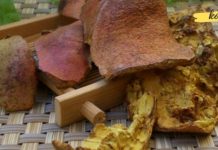How to Reduce a Fever Without Pills: The Most Effective Natural Methods

There are times when it seems impossible to lower a high fever. This raises an important question: is it possible to reduce body temperature without using medication? The answer is yes. In fact, many natural and folk remedies can help manage a fever safely and effectively.
Method 1: Remove Excess Clothing and Blankets
One of the simplest ways to help your body release excess heat is to remove warm clothing and heavy blankets. By doing so, you allow your body to cool down naturally through air circulation and evaporation. Avoid over-bundling, as it can trap heat and make the fever worse. Instead, wear lightweight, breathable clothing that facilitates heat dissipation.
Method 2: Wipe the Body with a Damp Cloth
Another effective method is gentle wiping of the body with a damp, not soaking wet, cloth. Focus on areas such as the forehead, neck, arms, and legs. Repeat this procedure every 30 minutes as needed. This helps remove excess heat from the skin and promotes natural cooling through evaporation.
Method 3: Apply Compresses
Applying cold or lukewarm compresses can also be highly effective in lowering body temperature. Place compresses in areas with large blood vessels and high heat exchange, such as under the arms, at the back of the neck, the liver area, and the groin. The compress draws heat away from the body, helping to bring down the fever gradually.
Method 4: Drink Plenty of Fluids
Staying hydrated is crucial when managing a fever. Drink water at the same temperature as your body, as this helps regulate internal temperature more gently than very cold water. Proper hydration prevents dehydration, which can make fever symptoms worse, and helps your body expel toxins through sweat and urine.
Method 5: Eat Fruits Rich in Vitamins
Consuming fruits like grapefruit, half a lemon, or two oranges can support the immune system and help reduce fever. These fruits are rich in vitamin C, antioxidants, and natural enzymes that enhance the body’s ability to fight infection. Eating them fresh or drinking freshly squeezed juice is most effective.
Method 6: Ventilate Your Room
Regularly airing out the room and ensuring good ventilation helps maintain a comfortable environment for someone with a fever. Fresh air prevents the room from becoming too warm or stuffy, which can otherwise exacerbate symptoms.
Effective Fever-Reducing Medicinal Plants
In addition to these methods, several medicinal herbs are known for their diaphoretic (sweat-inducing) and fever-reducing properties. Using herbal remedies can provide gentle and natural relief.
1. Raspberry Stems:
Raspberry stems, especially thick ones, are one of the most powerful natural diaphoretic and fever-reducing agents. To use: place the stems in water and simmer for 20–30 minutes until the liquid becomes a deep raspberry color. Drink the resulting infusion to help lower fever and promote sweating.
2. Linden Flowers:
Linden flowers are excellent for making a hot infusion. Boil one apple with its peel, add a little honey, and drink three to five cups of this warm tea consecutively. This method helps reduce fever naturally while providing soothing effects for the body.
3. Willow Bark:
Willow bark is a natural source of salicylic acid, which is effective in lowering temperature. To prepare: crush 20 grams of bark and pour 200 ml of boiling water over it. Let it steep for 30 minutes, then take one tablespoon of the infusion 5–6 times daily.
4. Other Herbs:
Many other herbs also have fever-reducing and diaphoretic properties, including:
Peppermint
Chamomile
St. John’s Wort
Oregano
Parsley
Meadowsweet
Strawberry leaves
Currant leaves
Each herb can be prepared individually as an infusion and consumed like tea to support natural fever reduction. Drinking herbal teas also helps maintain hydration, which is critical during a fever.
Why Natural Remedies Work
Natural remedies often target the underlying causes of fever while supporting overall health. By promoting sweating, increasing hydration, and providing essential vitamins and minerals, these methods help the body fight infection and recover more efficiently. Unlike some medications, these remedies are gentle, accessible, and can be prepared at home using common ingredients.
About kop.ge
kop.ge is a platform dedicated to providing advice on health, self-care, and everyday life. Our goal is to share information about natural remedies and home-based practices that can improve health, enhance beauty, and simplify daily routines. The best part is that these methods can be done at home, are enjoyable to use, and can save a significant amount of money.
Many of the tips and recipes available on our website can become a part of your everyday life. You can share your experiences with family and friends, making daily tasks easier for even more people. kop.ge demonstrates that you do not need expensive treatments or products to stay healthy, look beautiful, and manage household responsibilities effectively. Many results can be achieved at home using ingredients and resources commonly found in your kitchen or garden.
The recipes and advice published on kop.ge are safe for general use, but it is always advisable to consult a doctor before using any new treatment, especially if you have pre-existing conditions or if the fever is high or persistent.
Conclusion
Lowering a fever without medication is not only possible but can be done safely using natural methods. By following simple steps such as removing excess clothing, applying damp cloths or compresses, staying hydrated, eating vitamin-rich fruits, and ventilating your living space, you can help your body manage temperature naturally.
Incorporating medicinal herbs like raspberry stems, linden flowers, willow bark, and other diaphoretic plants can enhance the body’s ability to fight infection and reduce fever effectively. These natural approaches are gentle, safe, and accessible to everyone, making them excellent alternatives or complements to conventional fever treatments.
With consistent care, attention, and the use of these natural remedies, you can manage mild fevers effectively at home, supporting recovery while avoiding unnecessary medications. By combining traditional knowledge with simple home practices, you can maintain your health, comfort, and well-being even during episodes of elevated temperature.












